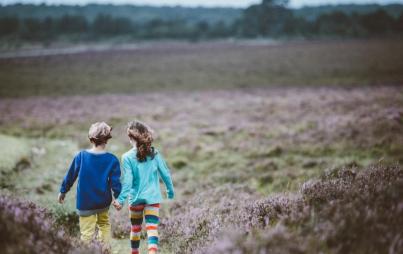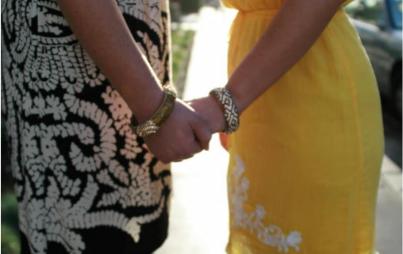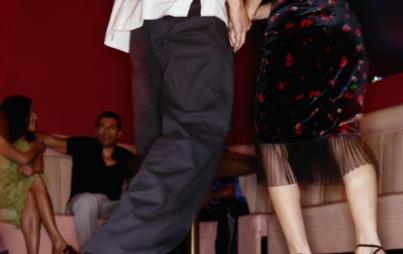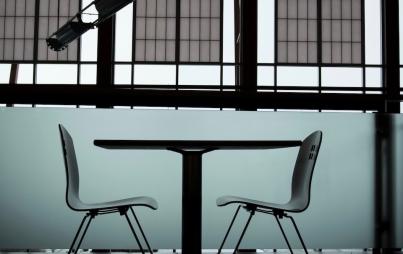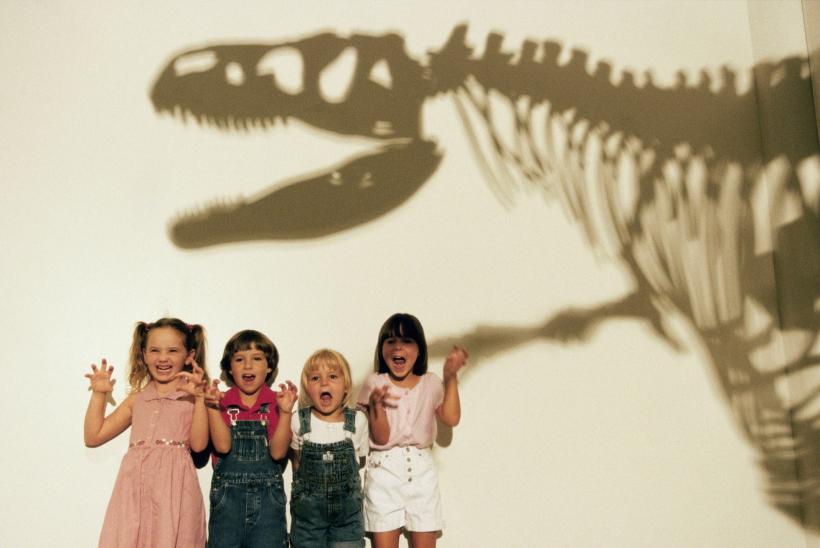
At first, every time the quarry had a group scheduled, the same level of panic would hit all over again.
Long Reads is a bimonthly feature, showcasing long-form essays.
“You’re going today,” my second-in-command boss tells me.
My eyes drop to my Converse shoes, permanently coated in a ring of grey wax. I tell him I’m not ready. I’m especially not ready for anyone to watch.
“Look, you just have to get it over with. The first time is the worst, and then it gets better. Okay?”
I know he means well, this 30-something man who looks like a teddy bear stuffed into a safari vest. He opens up the wooden chest at the side of our exhibit and hands me a dinosaur bone cast, chisel, brush, goggles, and a roll of toilet paper.
I take a deep breath and walk out onto our fake dinosaur quarry, hide the props behind the middle rock, and watch in fear as a line of second graders get ready to witness my first time delivering the lesson.
I started working at the Carnegie Museum of Natural History through a work-study program at my university. Not knowing that becoming a college professor and having a salaried job at a large museum were equally difficult dreams, I’d applied for the Bonehunter’s Quarry Education Assistant job thinking it might be the gateway to a glorious career in museum work. It was the summer before my senior year at Carnegie Mellon University, and I was doing all I could to drown out the buzzword speeches of “worst job market to graduate into.” I followed my mother’s long-standing advice of “better to dress up than down” and showed up to my interview in an ironed shirt, my best suit-skirt, and heels.
Though I went to the museum at least once a semester, I couldn’t conjure up a memory of where this “Bone Quarry” was. On my way into the interview, I grabbed a map from the front counter and traced my way through the first floor exhibits. At the back of the Ice Age room, two wooden ramps led up to an area I’d never visited before. A plastic background of Wyoming shone over a pit where small children attacked dinosaur bones stuck in some kind of gray material. Two staff people my age sat in plastic chairs against a wooden desk covered in laminated handouts and touchable objects.
Marie, the manager who oversaw several programs in the Education department, greeted me in jeans and a long-sleeve shirt. “You look very nice,” she started, “but I have to tell you, this stuff will ruin your shoes. You can wear any flat shoes here as long as your toes are covered.”
It sounded like I had the job, provided I could figure out some better footwear than three-inch pumps.
I started the next week, ecstatic I’d found another job where I was allowed do homework in my downtime. The pride I felt in wearing a museum badge around my neck more than outweighed the strangeness of wearing a glorified beige fishing jacket with “Bonehunter” written in all caps across the back. My job was to monitor the Bonehunter’s Quarry and to educate anyone who wandered up to our exhibit about paleontology and dinosaurs. No problem.
In the quarry itself, I could allow children from kindergarten through fourth grade. Any older than that and the kids tended to get too rowdy and create their own, more violent, rules. Any younger, and they might hurt themselves trying to eat a dull chisel. Before stepping foot into the quarry, I had to catch the attention of any children and their supervising adults and explain the rules. They had to wear the slimy electric green goggles over their eyes at all times and use the paintbrush to brush the dust away. Finally, they could only scrape with their chisel — no pounding and no hammering. My co-workers warned me that many children would put their tools together, using their paintbrush to hammer their chisel. While they might have thought this could get them closer to dinosaur bone glory, it only resulted in broken paintbrushes and a dip into our limited supply budget.
Sometime during my first week, it finally occurred to me to ask the obvious question. “Can they actually get the bones out?”
Like Sisyphus pushing his rock, I watched kids snap, overcome with focus and desire for their chance at real dinosaur bones. Some of these same kids would come back a few weeks later, puzzled over where all their hard work went.
One of my co-workers laughed, then leaned in so the nearby kids wouldn’t hear. “No. All the casts are drilled into the floor. When the bones start getting too exposed, we cover them back up.”
We acknowledged the horror this revelation would bring to the kids digging. Especially the ones whose parents had to drag them from the quarry so they could see the rest of the museum. “But I’m so close!” Their screams would echo off the stone walls of the Ice Age room. “I’ve almost got the whole head out!”
Like Sisyphus pushing his rock, I watched kids snap, overcome with focus and desire for their chance at real dinosaur bones. Some of these same kids would come back a few weeks later, puzzled over where all their hard work went. Most of my explanations didn’t go well. I’d have to tell these kids that I wasn’t a real paleontologist. There’s nothing like watching the mirage fall right in front of your eyes. Those kids left with a new, Truman-Show-esque perspective on the world, but I think they were stronger for it.
My focus on enforcing the quarry rules, learning the dinosaur’s names, and getting to know my co-workers worked great for ignoring the scariest part of the job: public speaking. I’d been notoriously shy ever since I could remember. Great one on one; red-faced and sweating standing in front of a room. Most of my co-workers were studying to become K-12 teachers, and all of them attended the University of Pittsburgh down the street from my private research university. Some of them even had classes in the towering Cathedral of Learning, which served as a guide for the disoriented Carnegie Mellon students who got lost in the twisting, turning streets of a non-West Coast city. I’d learned to drive in Buffalo, New York, so I was fine.
For the first two weeks at the quarry, I observed my future-educator co-workers stand in front of school groups and summer camps to deliver a set, 15-minute lesson on Andrew Carnegie, paleontology, and dinosaurs. I studied their body language, how they used the props, and their speech. I noticed how the youngest kids laughed at the toilet paper joke, while the older kids could have cared less that dinosaur bone casts are often made with toilet paper. Even when my co-workers accidentally missed a point in the lesson, they never got flustered. Some moved on; others found a way to get back to the missed point by the end. What I noticed the most was how everyone made teaching look so easy.
You Might Also Like: Dragons Live Forever
When my secondary boss finally pushed me to give my first lesson, he watched from behind the seated school kids. I’m sure my face was bright red the entire time. I’m positive that no one laughed at the toilet paper joke. I didn’t connect with the kids, and when it came time to hand each of them their goggles, chisel, and brush, it felt like each of them was giving me a middle finger with their eyes. All the vest-clad audience members assured me I didn’t do too badly. My secondary boss came over and gave me what I now know is a regular part of student-teaching practices. I had to review myself, and what I could improve on for next time. “Talk slower,” I remember saying.
“Yep, and don’t forget to breathe,” he added.
At first, every time the quarry had a group scheduled, the same level of panic would hit all over again. My co-workers were in on it too — they weren’t buying my excuses. “Go, you’ll be fine. I’ll help you out if you get lost.” Then I’d go out there, and the kids would laugh at one of my jokes, or some of them would thank me for their digging equipment. Slowly, and very painfully, I got better. I created a part of myself that enjoyed it — that lived for the bells of little kid laughter at one of my punchlines.
This same confidence spilled over into my friendships with co-workers, and I grew eager for their fierce debates about public education. One co-worker had an idea for an alternative school, with a focus on nature and room for student-driven projects. I wondered how I might have turned out if I’d had access to an education program. At the end of our shifts, we each took our place at our preferred tasks. Some people liked cleaning the goggles and organizing the tools. I preferred sweeping, which meant dragging a broom across the quarry and getting as many shards of the sand and wax mixture into the dustpan as possible. I’d dump the pieces of quarry broken off from over-eager children, shards, and dust into a cardboard box in our hidden break room. To access this, one simple kicked the back wall of the exhibit, which bounced the door of the hidden break room open. We had a mini-fridge, a microwave, and a large vat where every two months, we melted the sand and wax mixture to spread back over the dinosaur bones.
As the summer ended, I couldn’t imagine leaving the quarry despite my ruined shoes. My boss asked if I wanted to stay on during my senior year. I couldn’t say yes fast enough. The summer camp groups faded away, replaced by large school groups. Sometimes the groups were so big we had to create rows of children, some with their feet scraping against the quarry.
The exhibit felt like a bubble to me — a strange, utterly fake place where I was an authority figure, and the people around me didn’t care that I went to Carnegie Mellon.
Most of us stayed on from the summer, and a few people joined in the fall semester. I found myself guiding the new people, giving tips on managing the kids or setting up the lesson. I found I wasn’t that bad at it, either.
Throughout that year, the Education Department found occasional new opportunities for me. I subbed for operating the IMAX-style theater room around the corner, which at the time played a film on pterosaurs, or close-cousins of dinosaurs that evolved into modern-day birds. The operators adjusted each of the screens by hand, so there was always one that was a little bit off. The audience never seemed to mind though.
One Thursday night shift at the quarry, an hour before the museum’s “late night” of closing at nine in the evening, a couple in their forties ran to our exhibit and proceeded to have a complete melt-down that the theater was locked. I ended up leaving my quarry post and running through all the back-hallways of the museum looking for someone who had the key. There was no one left. Our exhibit and the ticket operators in the lobby appeared to be the only staff remaining. I ended up giving the couple one free ticket each, already thinking about how I could use the scenario in a job interview. Tell me about a time when you resolved a difficult situation. It turned out that that couple came all the way from Canada to watch our pterosaur movie, and they all but ripped the tickets up in front of me.
In the year that I worked at the Bonehunter’s Quarry, I learned that with a great vest comes great power, that most kids just want someone to listen to them, and most importantly, that when giving a presentation people don’t usually notice if you mess up.
When the museum began preparing for a traveling exhibit on whales, my boss pulled me to create the teen docent curriculum, including the activities they would run on family days. The success of this curriculum led me to update the insectology curriculum, a pile of type-written notes with handwritten updates. As I typed the pages into Word, adding colorful pictures of beetles and butterflies, I thanked my past-self for taking that typing class in ninth grade. No matter what side-projects I was working on, I always returned to the quarry ready to re-immerse myself into the world of bones, and dinosaurs, and idealist educators’ dreams.
One slow shift, I wrote a fake “How To” article for my job at a fake dinosaur quarry. I brought it to my undergraduate fiction workshop, and after little revision, it ended up being the first story I published after graduating. In this story, I detailed a game that my co-workers and I would sometimes play. Many parents and teachers would ask us what the quarry was made of. The answer was wax and sand. But after saying “wax and sand” in a cheerful voice thirty times in one hour, it gets a little old. For whatever reason, “sand and wax” was harder to say in a loud, professional voice. We’d stumble over it, and laugh once the person moved on. I remember reading the first draft out loud to the two people working with me that day and watching them cry with tears of laughter. When the story was published a year later, my old co-workers commented through social media, still laughing over our strange job.
Though I didn’t study education formally, nor was it offered as a major at my school, the experience I got at this weird job turned out to be crucial for the next two phases of my life. Forcing me to move past the fear of public speaking into figuring out how I was going to deal with it gave me the tools I’d need to transition from kids groups to an auditorium of 300, multiple times a week at my college admissions job. When it came time to teach in graduate school all the way in Boise, Idaho, I thought back to those days of making toilet paper jokes to kindergarteners and mocking the fourth-grade groups that didn’t laugh heartily enough at my jokes; I knew I could handle it. I took the alter-ego I’d created standing in the middle of the quarry and crafted it into a college educator. Instructor one hour, sweatpants-wearing, dog-cuddling introvert the next.
Wax and sand, sand and wax. The children sat in it, chiseled it, pounded it (No pounding!), and left with it streaked across their shirts. We scraped it off our shoes, slipped on it, swept it, melted it. The materials followed us home.
In the year that I worked at the Bonehunter’s Quarry, I learned that with a great vest comes great power, that most kids just want someone to listen to them, and most importantly, that when giving a presentation people don’t usually notice if you mess up. With a chisel in hand and a smile on my face, I could have made up completely new dinosaur species, and 99% of my audience wouldn’t have had a clue. These realizations, humorous as they were, proved to me that with enough repetition I didn’t have to be a shy teacher– I only had to be funny.



